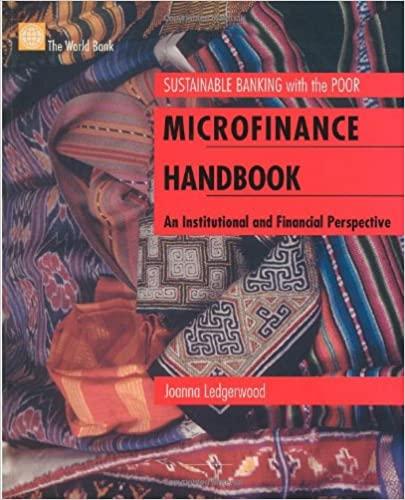Question
4. A stock has a beta of 1.15, the expected return on the market is 10 percent, and the risk-free rate is 4 percent. What
4. A stock has a beta of 1.15, the expected return on the market is 10 percent, and the risk-free rate is 4 percent. What must the expected return on this stock be?
A. 10.39 %
B. 11.90%
C. 10.90%
D. 12.65%
E. Impossible to calculate with information given.
5. Portnoy Corp. has a target capital structure of 60 percent common stock and 40 percent debt. Its cost of equity is 12 percent, and the cost of debt is 7 percent. The relevant tax rate is 35 percent. What is Portnoys WACC?
A. 9.48 %
B. 9.02%
C. 10.25%
D. 9.65%
E. Impossible to calculate with information given.
6. Henry is trying to determine Franco Incs cost of debt. The firm has a debt issue outstanding with 17 years to maturity that is quoted at 90 percent of face value. The issue makes semiannual payments and has a coupon rate of 6 percent annually. What is Franco Incs pretax cost of debt? If the tax rate is 35 percent, what is the aftertax cost of debt?
A. Pre Tax: 8.39%, After Tax: 6.75%
B. Pre Tax: 7.02%, After Tax: 4.56%
C. Pre Tax: 11.55%, After Tax: 7.51%
D. Pre Tax: 9.65%, After Tax: 8.22%
E. Impossible to calculate with information given.
7. Reese, Inc., has debt outstanding with a face value of $7 million. The value of the firm if it were entirely financed by equity would be $19.75 million. The company also has 350,000 shares of stock outstanding that sell at a price of $40 per share. The corporate tax rate is 35 percent. What is the decrease in the value of the company due to expected bankruptcy costs? A. $650,000
B. $1,200,000
C. $19,750,000
D. 750,000
E. Impossible to calculate with information given.
8. Connor Electric currently has debt outstanding with a market value of $70,000 and a cost of 10 percent. The company has EBIT of $7,000 that is expected to continue in perpetuity. Assume there are no taxes. I. What is the value of the company's equity?
A. $50,000
B. $100,000
C. $0
D. $1,000,000
E. Impossible to calculate with information given.
II. What is the debt-to-value ratio?
A. 1.0
B. 1.9
C. 0.5
D. 1.26
E. Impossible to calculate with information given.
III. What are the equity value and debt-to-value ratio if the company's growth rate is 5 percent?
A. 0.909
B. 0.954
C. 0.891
D. 0.526
E. Impossible to calculate with information given.
IV. What are the equity value and debt-to-value ratio if the company's growth rate is 9 percent?
A. 0.526
B. 0.909
C. 0.641
D. 1.263
E. Impossible to calculate with information given.
9. A portfolio is invested 20 percent in Stock A, 50 percent in Stock B, and 30 percent in Stock C. The expected returns on these stocks are 5 percent, 15 percent, and 12 percent, respectively. What is the portfolio's expected return?
A. 11.3%
B. 12.1%
C. 11.5%
D. 10.1%
E. Impossible to calculate with information given.
10. The unlevered cost of capital is:
A. the cost of capital for a firm with no debt in its capital structure.
B. the cost of capital for a firm with no equity in its capital structure.
C. the interest tax shield times pretax net income.
D. equal to the profit margin for a firm with some debt in its capital structure.
E. the cost of preferred stock for a firm with equal parts debt and common stock in its capital structure.
11. The firm's capital structure refers to:
A. the way a firm invests its assets.
B. the amount of capital in the firm.
C. the amount of dividends a firm pays.
D. the mix of debt and equity used to finance the firm's assets.
E. how much cash the firm holds.
12. When comparing levered vs. unlevered capital structures, leverage works to increase EPS for high levels of EBIT because:
A. interest payments on the debt vary with EBIT levels.
B. interest payments on the debt stay fixed, leaving more income to be distributed over less shares.
C. interest payments on the debt stay fixed, leaving less income to be distributed over less shares.
D. interest payments on the debt stay fixed, leaving less income to be distributed over more shares.
E. interest payments on the debt stay fixed, leaving more income to be distributed over more shares.
13. Thompson & Thomson is an all equity firm that has 500,000 shares of stock outstanding. The company is in the process of borrowing $10 million at 9% interest to repurchase 200,000 shares of the outstanding stock. What is the value of this firm if you ignore taxes?
A. $23.0 million
B. $24.8 million
C. $25.0 million
D. $26.2 million
E. $27.3 million
14. Your firm has a debt-equity ratio of .75. Your pre-tax cost of debt is 8.5% and your required return on assets is 15%. What is your cost of equity if you ignore taxes?
A. 11.25%
B. 12.21%
C. 16.67%
D. 19.88%
E. 21.38%
Step by Step Solution
There are 3 Steps involved in it
Step: 1

Get Instant Access to Expert-Tailored Solutions
See step-by-step solutions with expert insights and AI powered tools for academic success
Step: 2

Step: 3

Ace Your Homework with AI
Get the answers you need in no time with our AI-driven, step-by-step assistance
Get Started


